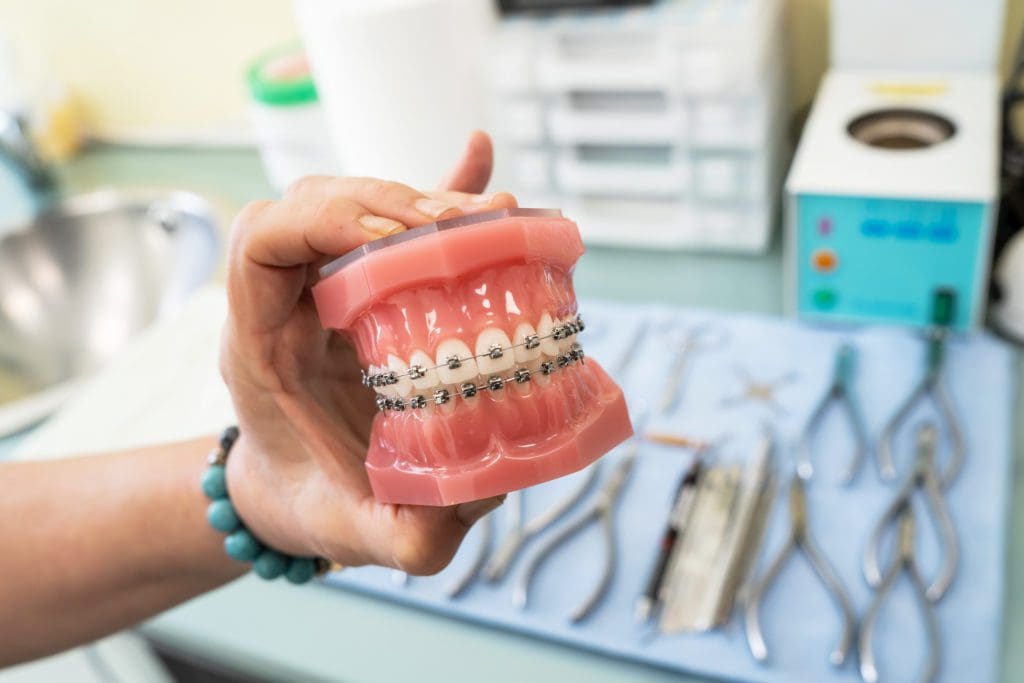Your Guide to Cumming Invisalign: Straightening Teeth with Style and Comfort
Your Guide to Cumming Invisalign: Straightening Teeth with Style and Comfort
Blog Article
Comprehensive Guide to Orthodontics Treatments for Correcting Dental Imbalances
In the realm of orthodontics, the trip to achieving a completely aligned smile includes a myriad of treatments tailored to remedy oral imbalances. From traditional dental braces to unseen aligners and even surgical alternatives, the field of orthodontics uses an array of options to resolve varying degrees of dental abnormalities. Recognizing the intricacies of each procedure, including their systems, advantages, and potential drawbacks, is essential in making educated decisions about one's orthodontic treatment. As we browse via the extensive overview to orthodontic procedures for fixing oral imbalances, the detailed details of each technique will certainly unfold, shedding light on the path toward a functional and harmonious dental positioning.
Orthodontic Procedures Review

In addition to standard braces and clear aligners, orthodontists might likewise advise other treatments like headgear, palatal expanders, or retainers to address details positioning concerns (cumming invisalign). These treatments are tailored to every client's one-of-a-kind requirements and might include a combination of therapies to achieve the wanted results. Routine adjustments and surveillance are critical parts of orthodontic therapy to ensure development gets on track and to make any type of essential alterations along the road. By undertaking orthodontic treatments, individuals can not just achieve a straighter smile yet also enhance their total oral health and wellness and feature.
Traditional Braces: Exactly How They Function
When thinking about orthodontic treatments for dental misalignments, traditional dental braces attract attention as a reliable technique for fixing teeth positioning. Traditional dental braces contain brackets, cords, and bands that function together to use constant pressure on the teeth, gradually relocating them right into the desired placement. The braces are affixed to the teeth utilizing a special adhesive, and the wires are threaded via the braces. By adjusting the stress of the wires, orthodontists can regulate the instructions and force related to each tooth, leading them into proper positioning over time.
One secret facet of how traditional dental braces job is the process of bone makeover. As stress is put on the teeth via the dental braces, the bone surrounding the teeth is improved to sustain the new tooth settings. This improvement is essential for the long-term stability of the dealt with alignment. Clients will certainly require regular modifications at the orthodontist's workplace to make certain the braces continue to apply the appropriate pressure for reliable teeth activity.
Invisible Aligners: Benefits And Drawbacks
These clear, custom-made trays are virtually unseen when put on, making them an appealing alternative for people seeking a more cosmetically pleasing orthodontic treatment. Clients can remove the aligners prior to consuming or brushing their teeth, lowering the danger of food getting stuck in the device and streamlining the cleaning procedure.

Surgical Orthodontic Options
Surgical treatments in orthodontics existing sensible options for dealing with complicated oral imbalances that might not be efficiently fixed via standard orthodontic therapies. While unseen aligners and typical dental braces can correct many orthodontic issues, certain cases require surgical treatment to accomplish optimum outcomes. Surgical orthodontic alternatives are typically recommended for severe malocclusions, substantial jaw disparities, and instances where the underlying bone framework requires adjustment to accomplish proper alignment.
One common surgical orthodontic treatment is orthognathic surgery, which involves rearranging the jaws to remedy practical issues such as difficulty eating or talking. This surgical procedure is usually executed useful source in cooperation with an orthodontist who helps straighten the teeth before and after the procedure. Surgical orthodontics might also entail treatments to subject influenced teeth, eliminate excess gum cells, or improve the jawbone to create an extra harmonious face account.
Before considering medical orthodontic options, patients go through an extensive assessment to establish the requirement and potential advantages of such interventions. cumming braces. While surgical treatment might seem difficult, it can dramatically improve both the feature and appearances of the smile in situations where standard orthodontic treatments fail
Retainers and Post-Treatment Care

Failure to comply with post-treatment care instructions can result in relapse, where the teeth slowly relocate back in the direction of their original positions. Consistent retainer wear, great oral hygiene, and regular dental examinations are necessary for keeping the results achieved through orthodontic surgery and guaranteeing the long-term stability of the corrected dental alignment.
Conclusion
In verdict, orthodontic procedures supply different options for dealing with oral misalignments. Surgical orthodontic alternatives are offered for more extreme misalignments. On the whole, orthodontic procedures can effectively enhance oral health and wellness and visual appearance.
As we browse through the thorough guide to orthodontic treatments for fixing dental imbalances, the elaborate information of each technique will certainly unfold, dropping light on the course toward a unified and functional oral alignment. Find Out More - cumming orthodontist
One of the most typical orthodontic treatments is the use of dental braces, which consist of metal braces and wires that apply mild stress to gradually move teeth right into the desired setting.When considering orthodontic treatments for oral imbalances, traditional dental braces stand dig this out as a time-tested technique for dealing with teeth placing. Additionally, undetectable aligners might not be suitable for complex orthodontic problems that call for more considerable teeth motion, as they are commonly recommended for moderate to moderate instances. Retainers are custom-made orthodontic devices developed to hold teeth in their dealt with positions after the completion of orthodontic treatment.
Report this page